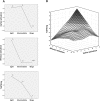Alterations in Activation, Cytotoxic Capacity and Trafficking Profile of Peripheral CD8 T Cells in Young Adult Binge Drinkers
- PMID: 26151816
- PMCID: PMC4494878
- DOI: 10.1371/journal.pone.0132521
Alterations in Activation, Cytotoxic Capacity and Trafficking Profile of Peripheral CD8 T Cells in Young Adult Binge Drinkers
Abstract
Background: Excess of alcohol consumption is a public health problem and has documented effects on the immune system of humans and animals. Animal and in vitro studies suggest that alcohol abuse changes CD8 T cell (CD8) characteristics, however it remains unknown if the CD8 profile of binge drinkers is different in terms of activation, trafficking and cytotoxic capacity.
Aim: To analyze the peripheral CD8 cytotoxic capacity, activation and trafficking phenotypic profile of Mexican young adults with regard to alcohol consumption pattern.
Methods: 55 Mexican young adults were stratified as Light (20), Intermediate (18) or Binge drinkers (17) according to their reported alcohol consumption pattern. Blood samples were obtained and hematic biometry and liver enzyme analysis were performed. Peripheral CD8 profile was established by expression of Granzyme B (GB), CD137, CD127, CD69, TLR4, PD1, CCR2, CCR4, CCR5 and CXCR4 by FACS. Data was analyzed by ANOVA, posthoc DMS and Tamhane, and principal component analysis (PCA) with varimax rotation, p<0.05.
Results: The Binge drinking group showed increased γGT together with increased expression of CD69 and reduced expression of TLR4, PD1, CCR2 and CXCR4 in peripheral CD8 cells. Other parameters were also specific to Binge drinkers. PCA established 3 factors associated with alcohol consumption: "Early Activation" represented by CD69 and TLR4 expression in the CD8 population; "Effector Activation" by CD69 expression in CD8 CD127(+)CD137(+) and CD8 CD25(+) CD137(+); and Trafficking by CXCR4 expression on total CD8 and CD8 GB(+)CXCR4(+), and CCR2 expression on total CD8. Binge drinking pattern showed low expression of Early Activation and Trafficking factors while Light drinking pattern exhibited high expression of Effector Activation factor.
Conclusions: Alcohol consumption affects the immune phenotype of CD8 cells since binge drinking pattern was found to be associated with high CD69 and low TLR4, CXCR4 and CCR2 expression, which suggest recent activation, decreased sensitivity to LPS and lower migration capacity in response to chemokines SDF-1 and MCP-1. These results indicate that a binge-drinking pattern of alcohol consumption may induce an altered immune profile that could be related with liver damage and the increased susceptibility to infection reported to this behavior.
Conflict of interest statement
Figures



References
-
- Secretaria de Salud. Encuesta Nacional de Adicciones 2011: Reporte de Alcohol. México: Secretaria de Salud; 2012.
-
- Li TK. Quantifying the risk for alcohol-use and alcohol-attributable health disorders: present findings and future research needs. J Gastroenterol Hepatol. 2008;23(Supl 1):S2–8. - PubMed
-
- World Health Organization; World Health Report 2011: Global status report on alcohol and health. Switzerland: World Health Organization; 2011.
Publication types
MeSH terms
Substances
LinkOut - more resources
Full Text Sources
Other Literature Sources
Research Materials
Miscellaneous

